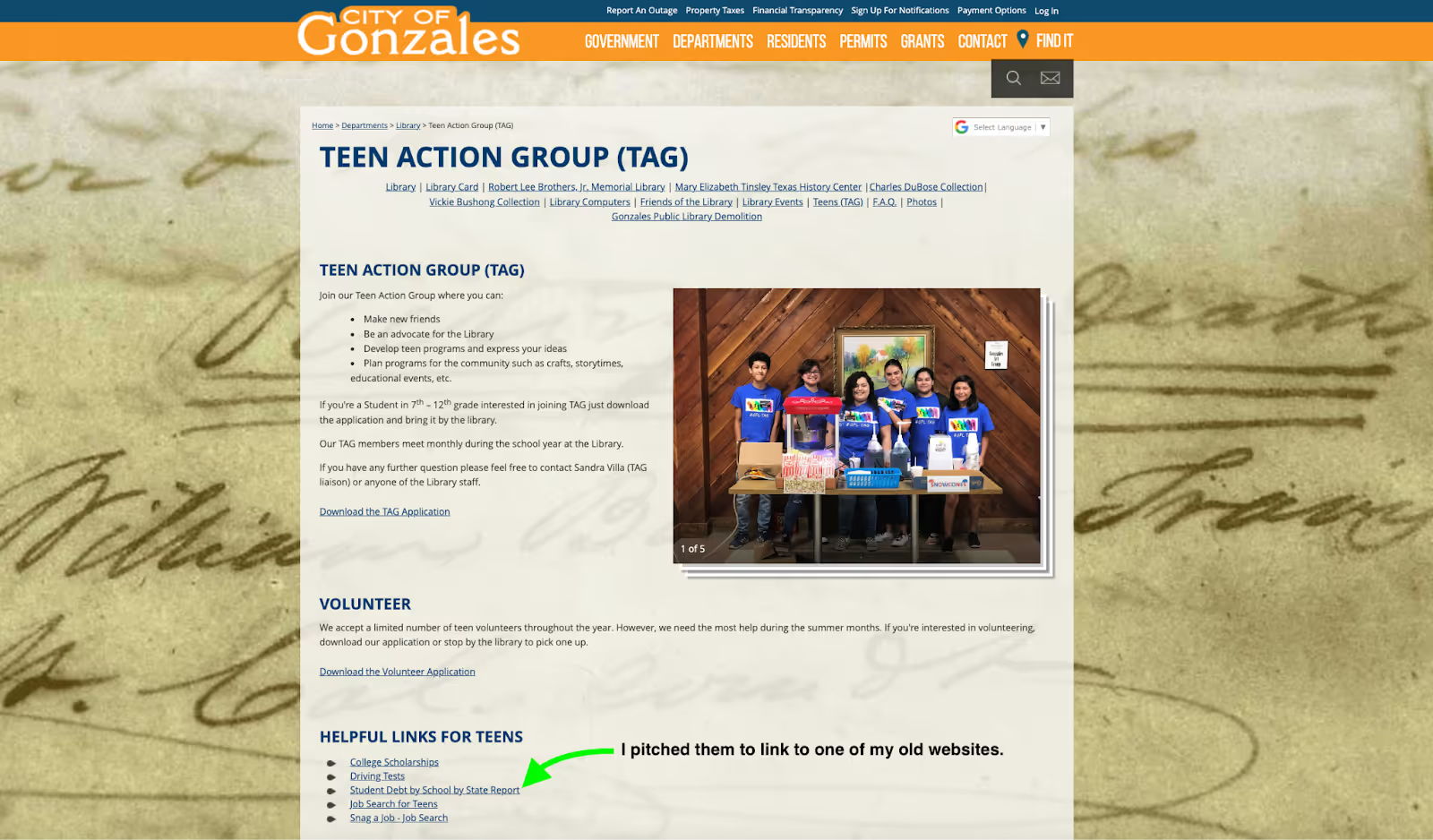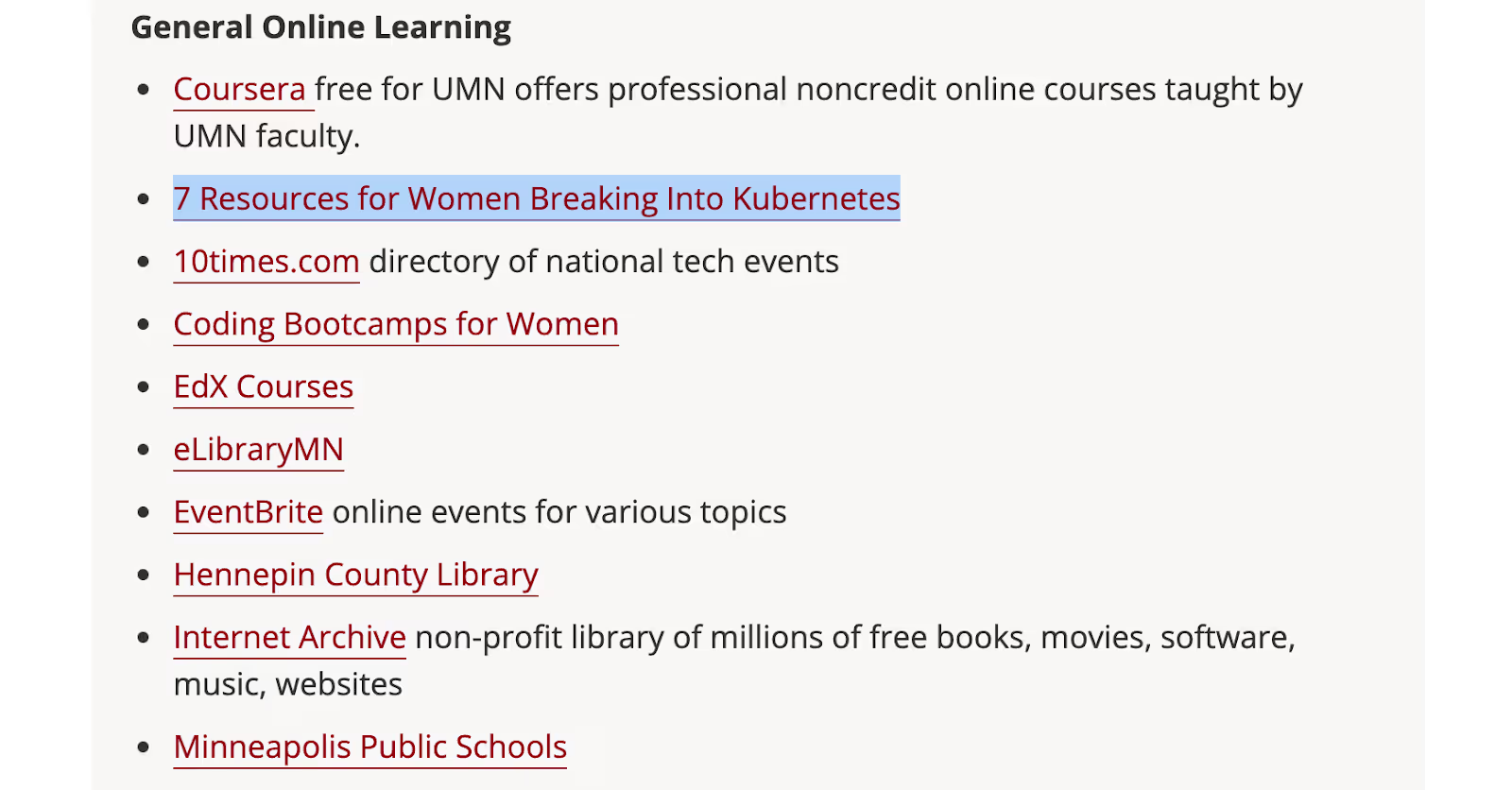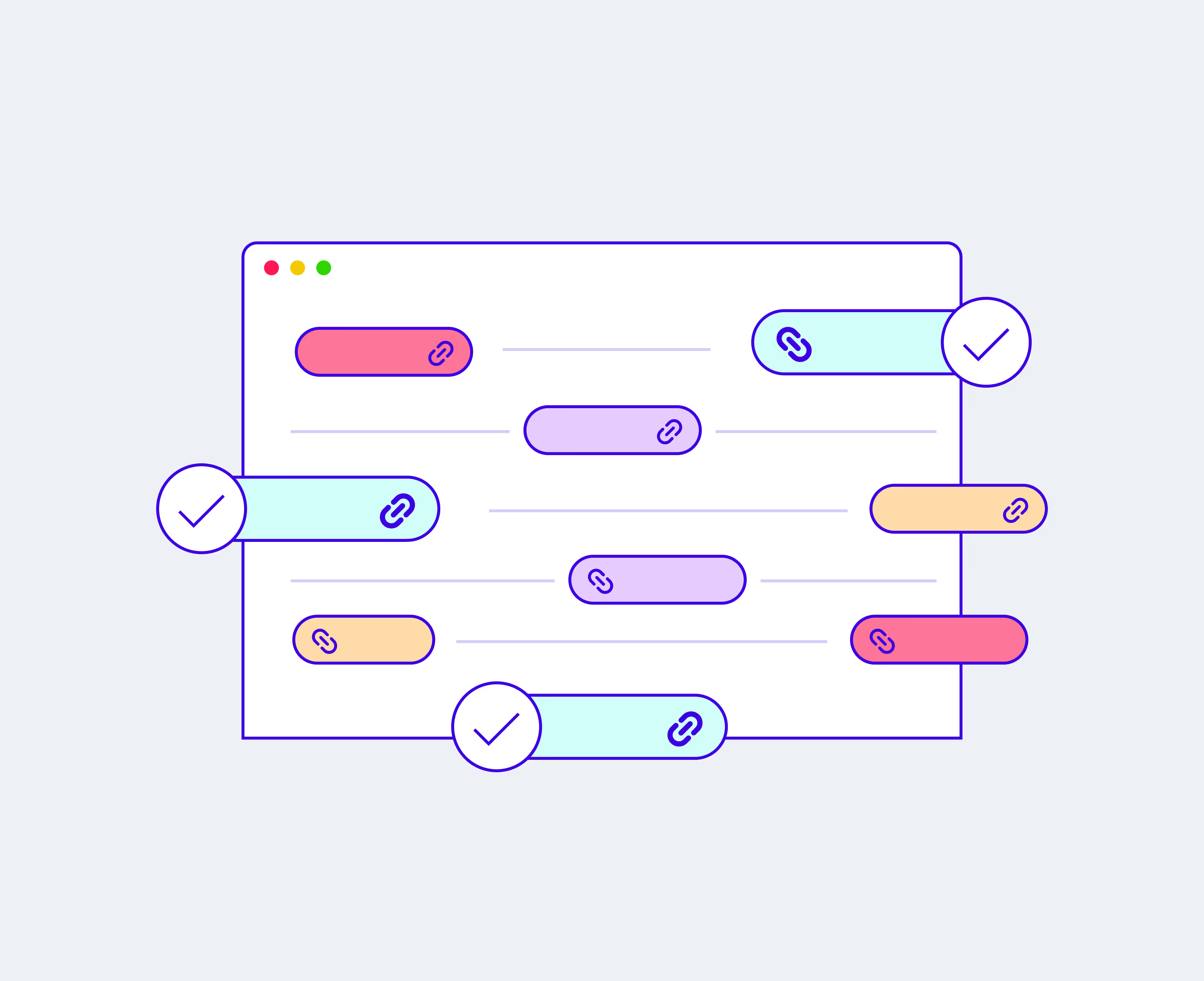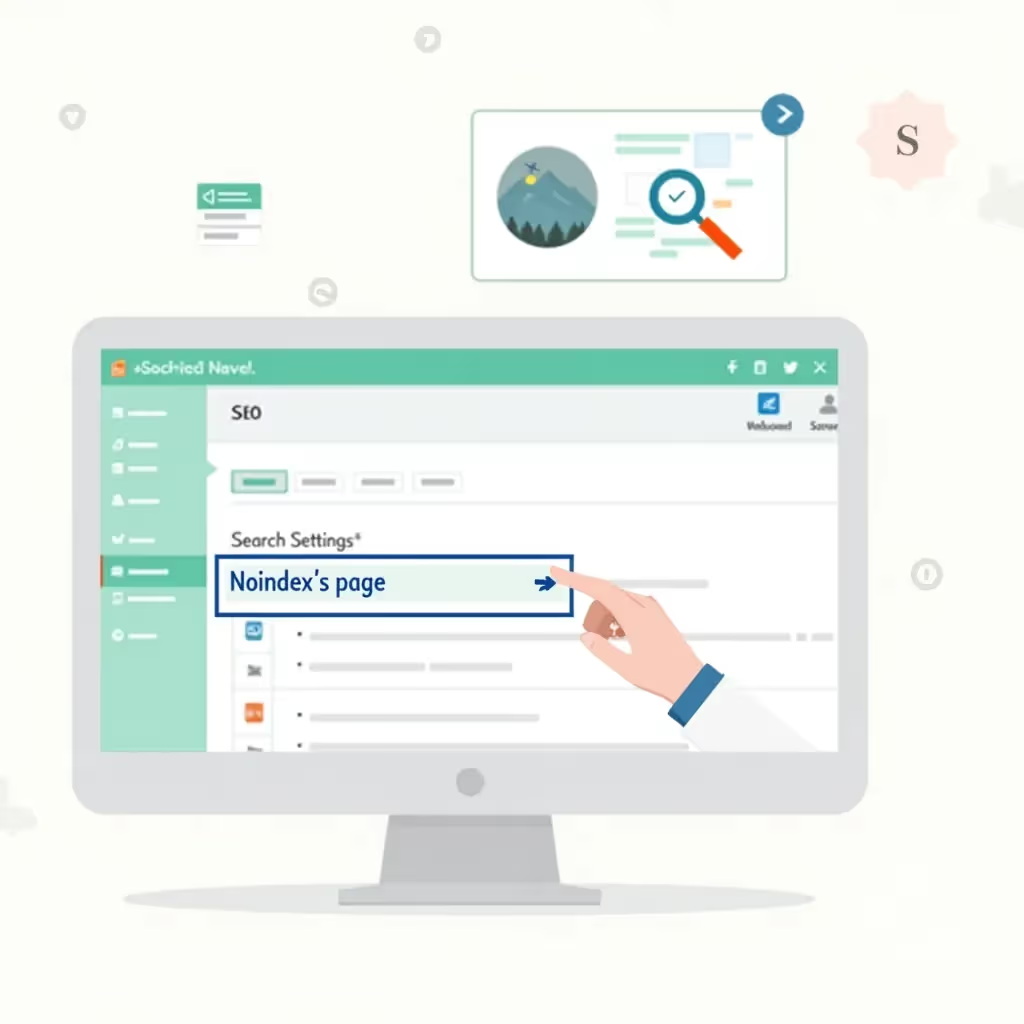There are many ways to build backlinks, and building them from resource pages is still a fairly effective way to do so at scale.
Building backlinks from resource pages works like this:
1. You create a fantastic resource — for example, a guide, blog post, or video.
2. You find websites that have resource pages or that serve as directories to different resources across the web (for instance, this Library of Congress page links to dozens of resources for people interested in learning French).
3. You find the email information for the folks responsible for those resource pages.
4. You email those folks and ask them if they could add a link to your amazing resource.
5. Most people won’t respond.
6. A few will respond, and typically 2% to 7% of the people you email will actually link to your webpage.
7. Repeat.
I’d reckon that I’ve built at least a thousand backlinks from resource pages in my career, including pages managed by colleges, high schools, libraries, and even government bodies.
This strategy is actually pretty easy to implement. However, fine-tuning it requires some practice and iteration.
I’ll walk you through these steps and show you a few resource page links I’ve built.
What Is a Resource Page?
A resource page is a webpage that offers many resources from third-party websites. Most high schools, colleges and universities, libraries, and local governments have resource pages for the people they serve.
Here’s an example from the University of Iowa; the physics department has a resource page for their students:

And if you scroll down a bit, you’ll see that they are linking to one of my old webpages, a tutorial for folks looking to learn about Kubernetes:

Some resource pages have a very large number of external links, as the example above does. It’s generally easier to get backlinks from resource pages that seem open to linking to anyone who asks, but those backlinks are generally worth less.
Here’s another example from the City of Gonzales, Texas; their library has a resource page for teens:

I asked them if they’d link to my article about student loan debt. And they did.
Notice that this webpage is linking out to a much smaller number of websites, making this backlink a more valuable one (in theory, more PageRank is passed, given that there are fewer external links).
You’ll hear a lot about the importance of getting .edu and .gov backlinks, and while I don’t think that’s totally necessary, the above examples are backlinks from .edu and .gov websites, respectively.
You’ll have the most success with resource pages closely related to the webpage you’re pitching. Depending on the topic space you’re in, there could be thousands or even tens of thousands of resource pages on the web that you could pitch to.
How to Find Resource Pages
Finding resource pages can be a little tricky.
You could, of course, do it manually. For example, if you know that you want to get backlinks from college resource pages, you could hire a virtual assistant to comb through a large list of colleges and try to find the relevant resource pages on their websites.
Alternatively, you could use search modifiers to find relevant webpages in search results.
For example, you could use the allintitle: search modifier to find webpages with specific words in their title tags:

In the above example, I’m looking for resource pages that would be relevant to an engineering student, and there are multiple relevant results, from colleges like the University of Houston, Penn State, and San Francisco State University.
There are other search modifiers that you could experiment with, including:
- intitle: to search for pages with a specific word in the title tags.
- inurl: to search for pages with a specific word in the URL.
- allinurl: to search for pages with multiple words in the URL.
- intext: to search for pages with a specific word in the content..
- allintext: to search for pages with multiple words in the content.
It takes some practice, but in an hour or two, you could collect hundreds of relevant resource pages to target.
Another approach to consider is using your competitors for inspiration. For example, if you have a competitor who’s building backlinks through resource page link building, you can use an SEO tool like Positional, Semrush, or Ahrefs to determine which of their site’s webpages have the most backlinks, and then where those backlinks are coming from.
In years past, my competitors built many backlinks from resource pages, and it was very easy to export a list of the resource pages they had built links from. This approach is excellent because the folks you contact are likely already receptive to linking to a webpage similar to yours or one you could create.
Finding Contact Information
As you’re building your list of resource pages, you might want to pull the contact information for the webpage and save it for later.
Sometimes, it’s easy: for example, the City of Gonzales provides the contact information for the person responsible for this webpage:

Other times, finding the correct contact information is a bit harder. You could always collect the raw list of resource pages first and then enrich your data with the relevant contact information. There are plenty of tools that you can use to pull relevant email information for individuals or organizations. But in my experience, collecting contact information manually always yielded better results.
Types of Webpages to Pitch
You want to be smart about what you’re pitching. As mentioned previously, you should pitch a resource from your website that’s directly relevant to the webpage you’re reaching out to. Being thoughtful about the specific webpages you’re pitching is table stakes.
It will be difficult to convince someone to link to a very promotional webpage on your website.
So I recommend pitching webpages that are very evergreen and not focused on your company’s product and services.
For example, if you have a product that helps writers create content with AI and you’re trying to build backlinks from libraries, it would be better to pitch an article about how to effectively use AI tools than a promotional listicle about the best AI writing tools.
I’ve also found that video guides or courses perform well. People like to link to comprehensive resources, courses, and guides.
You can also create webpages just for pitching (or building backlinks), and tailor those webpages to a very specific audience (this will improve your success rate).
In a past life, I noticed that there were a bunch of resource pages specifically for women engineers and women looking to start a career in STEM. So I created a specific guide tailored to this audience, and then I pitched it to those resource pages.
For example, I found this Women in Technology resource page on the University of Minnesota’s website:

And I pitched them a guide for women looking to break into a career in Kubernetes:

You’ll notice that I did not invent this approach. This webpage also links to a resource about coding bootcamps for women, which I have to assume was pitched to them as well.
If you go with this approach, you should work hard to personalize your webpage to the audience of the resource page you’re pitching to and create a wonderful and helpful piece of content. You won’t have success with this strategy if the content you’re pitching is low quality, irrelevant, and undifferentiated from the rest of the resources they might already be linking to.
This isn’t a cheap trick. Your goal should be to make the resource pages you pitch to more helpful to their constituents. At least, this is the right mindset for this strategy.
It’s OK if you don’t build backlinks directly to the highest-value or most important webpages on your website. By building links to surrounding webpages, you’ll increase the domain authority of your entire website, and you can use internal links to then shift PageRank from the webpages you built backlinks to, to the webpages you actually care about ranking in search results.
How to Pitch
You’ll want to use a script like this:
–
Subject: Missing Resource
Hey <NAME>,
Hope your week is going well. My name is <YOUR NAME>, and I’m the <INSERT TITLE> at <COMPANY>.
I’m reaching out because I stumbled into <NAME OF ORGANIZATION’s> resource page for <INSERT THE NAME OF THE RESOURCE PAGE>.
You’ve got a lot of great resources here. And I was wondering if you might be open to adding our resource on <YOUR TOPIC> to your webpage: <INSERT LINK HERE>
I’ve spent a lot of time creating this resource, which is totally free to use. It includes several videos, graphics, and expert commentary.
Anyway, I hope the rest of your week is a good one.
Best
<YOUR NAME>
–
You’ll want to do a lot of testing of scripts, subject lines, and the types of webpages that you pitch. And, of course, you’ll want to follow best practices to ensure email deliverability.
I would recommend sending one followup if they don’t respond initially. I would be hesitant to send multiple followup emails in one sequence, and if they don’t respond to the initial email and the followup, maybe save them for later and try again in a few months with a different tack.
Repeat
It’s unlikely that your first try at this link-building strategy will be a home run. It takes some practice, and you’ll want to pitch over and over again if you’re trying to build a large number of backlinks.
In the past, our team would typically have a 2% to 7% success rate (they linked to us) depending on the type of webpage that we were pitching. In other words, if you pitch to 100 resource pages, you might get two to seven backlinks.
So it’s a little like outbound sales.
One pro tip: if you secure a backlink on a resource page, you can always ask them to add another backlink to your website, too. Once folks have already linked to you once, they may be more willing to link to another page on your website (perhaps one that is a little more promotional).
Final Thoughts
This strategy is actually pretty simple. And it’s very scalable once you get the right processes in place.
Create great content, find relevant resource pages, pitch your content to them, and repeat.
As a last word, I’ll note that creating content that’s slightly unrelated to your website’s core topic area might be tempting, just because it would be good for pitching (building links to). But my advice would be to resist that urge, and to implement this strategy to build links only to webpages on your website that are closely related to your website’s core focus. Otherwise, you might end up building a lot of backlinks that are seemingly random, unrelated to your website’s purpose, and, in some ways, confusing for search engines.
This strategy should be used alongside other link-building methods to ensure that your backlink profile looks natural. In other words, don’t use only this link-building strategy, as the resulting backlinks would appear unnatural to search engines. You’ll also want to build links via guest blogging, link bait, and digital PR.





